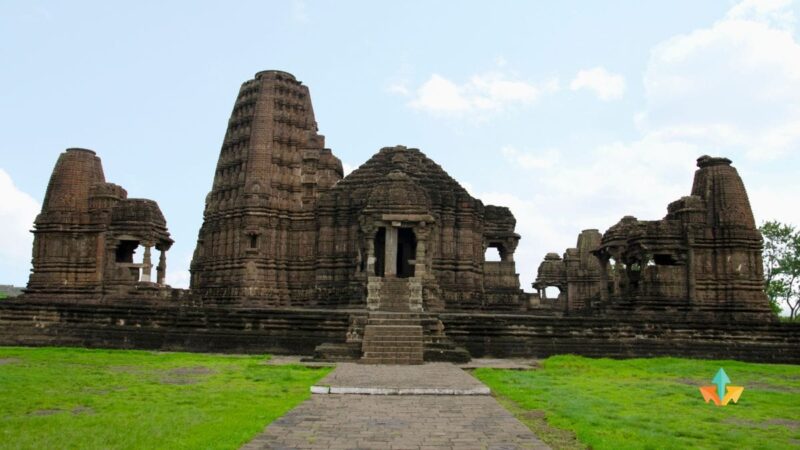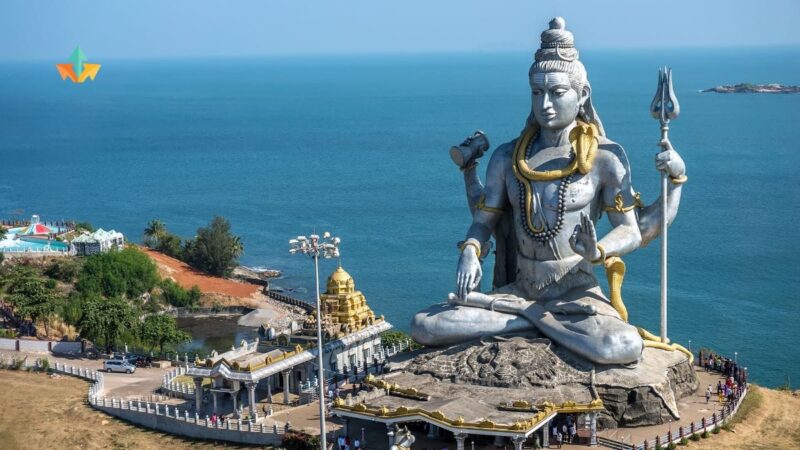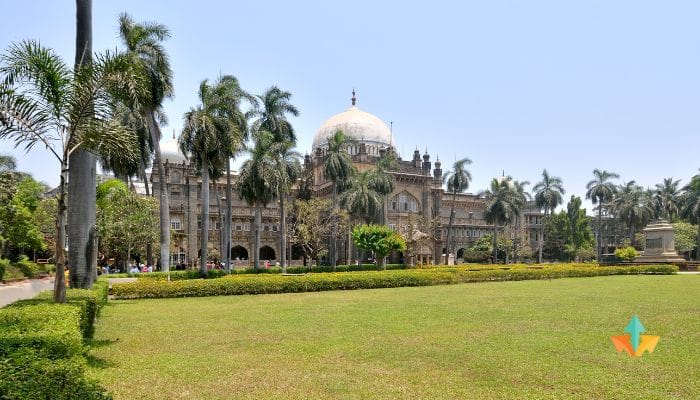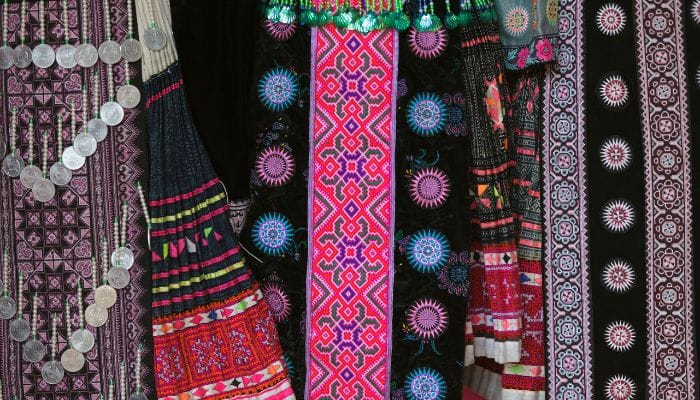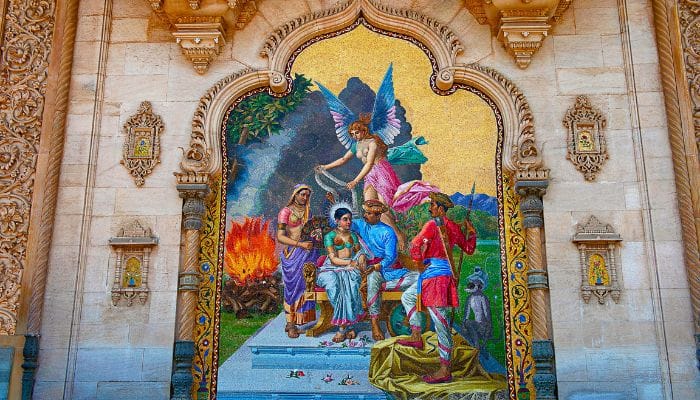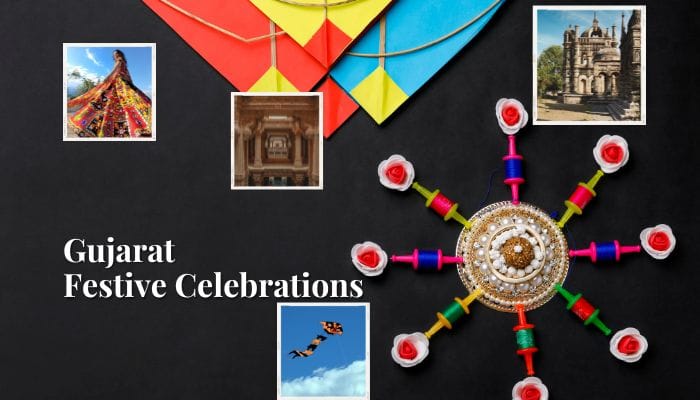Nashik is home to some of the must-visit temples in Maharashtra, where faith meets timeless architecture. These must-visit temples in Nashik include sacred spots like the Shiv Linga at Shree Someshwar Temple and the fierce Bhadrakali Devi Mandir. From ancient monuments and stone-carved elephants to the spiritual aura of Anandwalli Dome and Balaji Temple, every site has a story. Whether you’re fulfilling a navas or on a peaceful Nashik tour, these temples leave a lasting impression. Discover the spiritual essence of a city rooted in legends and divine power.
Spiritual Journey Through Temples in Nashik
Embarking on a spiritual journey through Nashik’s temples allows you to explore a rich tapestry of faith and tradition. This pilgrimage offers an opportunity for reflection and spiritual awakening amidst sacred spaces imbued with centuries-old practices. Each temple invites you to experience the divine, promising connection and peace along your path.
Highlights of Nashik’s Temple Heritage
Importance of Temples in Nashik in Hindu Pilgrimages
Temples in Nashik hold significant importance in Hindu pilgrimages, primarily because the city is a part of the revered Kumbh Mela. Known as one of the four locations where the celestial nectar (‘Amrit’) spilled, Nashik attracts millions seeking salvation. Each temple serves as a spiritual waypoint in a believer’s journey, unifying faith and devotion while offering divine blessings.
Spiritual Importance of Nashik Temples in Hinduism
Key PointExplanationNashik’s Role in Hindu PilgrimagePart of the sacred Kumbh Mela, one of Hinduism’s most important events.Mythological SignificanceBelieved to be one of the places where Amrit (celestial nectar) was spilled.Attraction for DevoteesMillions visit Nashik seeking salvation and spiritual growth.Importance of TemplesEach temple acts as a spiritual waypoint, guiding believers on their journey.Blend of Faith and BlessingsTemples unify faith and devotion, offering divine blessings.
Blend of Spirituality and Architecture in Temples in Nashik
Nashik’s temples are a harmonious blend of spirituality and grandeur, reflecting diverse architectural styles. Many temples exhibit intricate carvings and sprawling courtyards, exemplifying ancient Indian craftsmanship. As you wander through these sacred sites, the fusion of art and devotion not only uplifts the spirit but also provides a visual feast, with each temple offering a unique narrative through its design.
Noteworthy Temples in Nashik to Explore
1. Trimbakeshwar Temple – The Sacred Abode
Among the most iconic temples in Nashik, Trimbakeshwar Temple holds a sacred place as one of the twelve Jyotirlingas of Lord Shiva. Tucked beneath the serene Brahmagiri hills, this ancient shrine is uniquely revered for its lingam that symbolizes the holy trinity Brahma, Vishnu, and Mahesh—in one form. With its spiritual energy and intricate architecture, Trimbakeshwar draws countless pilgrims seeking both inner peace and Vedic wisdom. Just a short distance away lies Panchavati, a legendary land from the Ramayana, home to the Kapaleshwar Temple, another gem among the top must-visit temples in Nashik.
Highlights of Trimbakeshwar and Kapaleshwar Temples:
Trimbakeshwar is one of the 12 Jyotirlingas in India
Unique Shiv Ling representing the Trimurti (Brahma, Vishnu, Mahesh)
Scenic location at the foothills of Brahmagiri
Kapaleshwar Temple is linked to Ramayana’s Panchavati tale
Both are architectural marvels and important spiritual destinations
2. Kalaram Temple – A Historical Marvel
The most culturally significant temples in Nashik, the Kalaram Temple stands out with its stunning black stone architecture and 18th-century heritage. Dedicated to Lord Rama, this sacred site features intricately carved pillars, a grand courtyard, and timeless artistry that reflects Nashik’s deep spiritual roots. Just a short walk away, the Maruti Temple impresses with its blend of sandstone and marble, adding to the area’s divine charm. Together, these historic temples transport visitors through centuries of devotion, making them unmissable stops for both pilgrims and history lovers exploring Nashik’s temple trail.
Highlights of Kalaram and Maruti, famous temples:
Kalaram Temple is built entirely from black basalt stone
Dedicated to Lord Rama with beautiful 70+ stone pillars
Spacious courtyard ideal for spiritual gatherings
Maruti Temple features classic sandstone and marble work
A must-visit for architecture, history, and faith seekers
3. Someshwar Temple – Nature’s Bliss
Someshwar Temple offers a peaceful sanctuary surrounded by lush greenery and calm waters. This tranquil shrine, dedicated to Lord Shiva, is one of the oldest and most beloved temples in Nashik, known for its scenic beauty and nearby cave formations. Its serene atmosphere invites quiet reflection, drawing spiritual seekers and nature lovers alike. Alongside other sacred spots like the Kalaram Temple and Jain Mandir, it forms a key part of Nashik’s divine landscape. Ritual baths in the river and the soothing environment create a perfect blend of devotion and peace, making Someshwar Temple an ideal destination for those yearning for spiritual solitude.
Highlights of Someshwar Temple:
Located on the Godavari River’s peaceful banks
Dedicated to Lord Shiva with a naturally meditative setting
Surrounded by greenery and unique cave formations
Close to other major temples like Kalaram and Jain Mandir
Ideal for ritual bathing, reflection, and quiet devotion
4. Muktidham Temple – Architectural Grandeur
With its gleaming white marble structure and intricate carvings of the Bhagavad Gita, Muktidham Temple is a spiritual and architectural gem in the heart of Nashik. As one of the most fascinating temples in Nashik, it features replicas of the 12 Jyotirlingas and idols of deities like Lord Rama, Lord Lakshman, and Goddess Sita—each crafted with divine precision. The temple honors the essence of India’s sacred sites under one roof, offering visitors a chance to connect with various forms of divinity. Whether you’re a pilgrim or a curious traveler, this temple invites you to explore both artistic excellence and spiritual teachings in a single visit.
Highlights of Muktidham Temple:
Made entirely of white marble with Bhagavad Gita verses engraved
Houses replicas of 12 Jyotirlingas and multiple deities
Located in central Nashik for easy access
Offers insight into Hindu scriptures and mythology
A favorite for spiritual seekers and architecture enthusiasts alike
5. Kapleshwar Temple – Ancient Stories Untold
Kapleshwar Temple, dedicated to Lord Shiva, is a powerful symbol of devotion and mythological depth. Deeply rooted in legend, it is believed to be the place where Shiva himself worshipped Lord Vishnu to cleanse the sin of Brahmahatya. As one of the historically rich temples in Nashik, it stands at the crossroads of ancient belief and divine energy. The city’s connection to Lord Rama’s exile enhances the spiritual aura of this site, making it a must-visit for those intrigued by sacred narratives.
Highlights of Kapleshwar Temple:
Associated with the legend of Shiva worshipping Vishnu
Steeped in powerful mythological significance
Located near other key Ramayana-linked spots in Nashik
Ideal for seekers of spiritual insight and ancient stories
Quiet, reflective environment perfect for meditation and prayer
6. Navshya Ganpati Temple – Blessings for Devotees
Known for fulfilling heartfelt wishes, Navshya Ganpati Temple is a cherished spiritual site that draws devotees seeking divine guidance and blessings. The serene idol of Lord Ganesha, believed to possess miraculous powers, offers a calming presence to all who visit. Among the many revered temples in Nashik, this one holds special significance for those yearning for peace, fulfillment, and a deeper bond with the divine. Located on the banks of the Godavari River, it creates the perfect setting for spiritual reflection, where many begin their visit with a sacred dip before entering the temple—just as they do at the nearby Kapaleshwar Temple.
Highlights of Navshya Ganpati Temple:
Idol of Lord Ganesha known for granting wishes
Peaceful riverside location along the Godavari
Popular for personal prayers and quiet reflection
Pilgrims often take ritual baths before darshan
Strong local belief in the temple’s miraculous powers
7. Ganga Godavari Temple – Rivers and Reverence
Ganga Godavari Temple holds deep spiritual importance as it symbolizes the divine unity of faith and nature. Located at the sacred Ramkund—a revered ghat on the banks of the Godavari River—this temple is believed to be where the river transforms into a holy force capable of washing away sins. As one of the most spiritually vibrant temples in Nashik, it serves as a powerful site for rituals, pind daan, and ceremonial dips that connect devotees with centuries of tradition. Pilgrims from across the country gather here, especially during Kumbh Mela, to experience the purifying energy of the Godavari and to offer prayers to the deities enshrined within the temple.
Highlights of Ganga Godavari Temple, which honors goddesses, include a statue with intricate carvings of monkeys.
Located at the holy Ramkund on the Godavari River
Important site for pind daan and ritual bathing
Strongly associated with Kumbh Mela traditions
Represents the spiritual link between water and salvation
A peaceful yet powerful spot for prayer and reflection
8. Naroshankar Temple – Timeless Beauty
Naroshankar Temple stands as a brilliant example of heritage and devotion, capturing attention with its exquisite Hemadpanthi architectural style. Built in the 18th century along the scenic Godavari River, the temple is adorned with delicate floral carvings, ornate sculptures, and intricate latticework that reflect centuries-old craftsmanship. Among the historically rich temples in Nashik, Naroshankar offers a unique blend of artistic grace and spiritual calm. It’s not just a place of worship but a visual delight for those who appreciate heritage architecture.
Highlights of Naroshankar Temple:
Built in the classic Hemadpanthi architectural style
Features detailed floral motifs and ornamental carvings
Located on the banks of the Godavari River
Ideal for history lovers and architectural enthusiasts
One of Nashik’s most photogenic and spiritually calm spots
9. Bhakti Dham – Spiritual Serenity
A peaceful retreat for the soul, Bhakti Dham offers a haven of spiritual calm in the heart of Nashik. Known for its serene ambiance and devotion-filled atmosphere, this temple complex is one of the most tranquil temples in Nashik, drawing seekers who crave silence, clarity, and a deeper connection with the divine. Surrounded by gentle architecture and soothing chants, it’s an ideal place for meditation, prayer, and peaceful contemplation. Devotees often visit to disconnect from the noise of everyday life and immerse themselves in spiritual practices that nurture the mind and soul.
Highlights of Bhakti Dham for enlightenment:
Quiet temple complex ideal for meditation and introspection
Popular spot for devotional gatherings and prayers
Peaceful environment suited for solo or group spiritual visits
Offers a calming break from the fast-paced outside world
Welcomes visitors seeking emotional and spiritual healing
10. Jain Mandir – A Non-Hindu Retreat
Jain Mandir in Nashik is a beautifully crafted spiritual space that invites reflection and calm. Built with intricate marble work, graceful arches, and peaceful courtyards, it showcases the architectural elegance of Jain traditions. While distinct from Hindu worship, this temple holds a special place among the serene and spiritually enriching temples in Nashik, offering a quiet escape for those curious about Jain philosophy and non-Hindu spiritual paths. Its atmosphere encourages mindfulness, self-discipline, and peaceful contemplation, making it a perfect stop for anyone seeking deeper meaning in a tranquil setting.
Highlights of Jain Mandir, Nashik:
Stunning marble architecture with fine detailing
Peaceful environment ideal for introspection and silence
Located on the popular Gangapur Road
Offers insight into Jain values and way of life
Welcomes both spiritual seekers and architecture admirers
11. Sundarnarayan Temple – Sacred Structure on the Riverbank
Gracefully positioned along the Godavari River, Sundarnarayan Temple is a striking symbol of devotion and architectural charm. Dedicated to Lord Vishnu, this sacred site captivates visitors with its beautifully detailed carvings, spiritual atmosphere, and scenic riverside backdrop. Counted among the visually stunning temples in Nashik, it offers a perfect blend of divine presence and natural serenity. Whether you’re drawn by its mythological significance or its peaceful setting, the temple invites reflection and reverence, making it an unforgettable stop on any spiritual journey through Nashik.
Highlights of Sundarnarayan Temple: Anjaneri.
Riverside location along the peaceful Godavari
Dedicated to Lord Vishnu with ornate stone carvings
Reflects classical Indian temple architecture
Ideal for photography, prayer, and peaceful visits
A quiet yet powerful part of Nashik’s spiritual trail
12. Veda Mandir – Echoes of the Scriptures
More than just a place of worship, Veda Mandir is a remarkable spiritual and educational center dedicated to the study and preservation of ancient Hindu wisdom. Nestled in the cultural heart of the city, it stands apart from other temples in Nashik by offering both devotional space and academic insight into the sacred Vedas. Here, the air vibrates with the rhythmic chants of students learning age-old scriptures, creating an atmosphere that is both peaceful and intellectually rich. Whether you’re a seeker of spiritual depth or a student of Indian philosophy, Veda Mandir provides a rare opportunity to experience the sacred texts in their living, breathing form.
Highlights of Veda Mandir:
Combines worship with Vedic education
Regular chanting and scripture learning by scholars
Focused on preserving ancient Hindu philosophy
Open to spiritual seekers and learners alike
Offers a calm and intellectually enriching environment
13. Swaminarayan Temple – Modern Spiritual Space
Swaminarayan Temple in Nashik offers a refreshing spiritual experience, where modern elegance meets timeless devotion. With its well-planned layout, clean surroundings, and intricately crafted idols, the temple draws visitors who seek not only inner peace but also a sense of community. Among the most well-organized temples in Nashik, it stands out for blending contemporary architecture with the rich traditions of Sanatan Dharma. Devotees often admire the temple’s homage to the grandeur of India’s famous shrines, reflected in its sculpted domes and serene sanctum. From daily aartis to cultural events, the temple serves as a vibrant spiritual hub for those who value structure, devotion, and collective celebration.
Highlights of Swaminarayan Temple:
Modern architecture rooted in traditional design
Clean, peaceful, and highly organized environment
Hosts regular devotional, cultural, and social activities
Inspired by architectural styles of iconic Indian temples
Welcomes all for prayer, reflection, and community worship
14. Khandoba Temple – Local Devotion Hub
Khandoba Temple stands as a powerful symbol of regional faith and cultural identity, dedicated to Lord Khandoba, a revered warrior deity and guardian of the people. Deeply woven into the local spiritual fabric, the temple becomes especially vibrant during the Champa Shashthi festival, when devotees gather in celebration, music, and ritual worship. As one of the most culturally rich temples in Nashik, it offers visitors a chance to witness the spirited energy of Maharashtra’s folk traditions. Whether you’re drawn to divine legends or festive community life, this temple provides a dynamic experience of devotion, heritage, and local pride.
Highlights of Khandoba Temple:
Dedicated to the warrior deity Khandoba
Center of major local festival: Champa Shashthi
Reflects deep-rooted regional customs and faith
Popular gathering spot for community rituals
Ideal for exploring local spirituality and traditions
Best Time to Visit Temples in Nashik
Weather Considerations for Visiting Temples in Nashik
When planning your visit to the temples in Nashik, consider the city’s climate, which can significantly affect your pilgrimage experience. The ideal time is between October and March when the weather is cooler and more comfortable for exploring. Summers, from April to June, can be intensely hot, while the monsoon season, from July to September, brings heavy rainfall that might disrupt travel plans.
Festival Celebrations at Temples in Nashik
Visiting Nashik during festival seasons offers a vibrant and colorful experience, as the temples in Nashik come alive with traditional celebrations. The Kumbh Mela, held every 12 years, is a grand event attracting millions. Notably, many visitors also explore the revered Hanuman Temple in the city, where they can engage in devotional activities linked to epic tales of Ravana and his encounters. Other festivals like Maha Shivaratri at Trimbakeshwar and Diwali see splendid rituals and decorations. These times are ideal for witnessing the true essence of culture and devotion.
Festival Celebrations at Major Temples in Nashik
Temple NameSuggested Festival Image PlaceholderTrimbakeshwar TempleMaha Shivaratri night rituals with decorated JyotirlingaHanuman TempleDevotees performing aarti with Ravana-themed muralsKalaram TempleDiwali lighting and rangoli outside the temple entranceKapaleshwar TempleShiva devotees during Shravan month performing abhishekamGanga Godavari TempleKumbh Mela crowd with sadhus and ritual bathing at Ramkund
Travel Tips for Visiting Temples in Nashik
How to Reach Nashik, Maharashtra
Reaching Nashik is relatively straightforward, whether by air, rail, or road. The city is well-served by Nasik Road Railway Station, which is connected to major Indian cities such as Nagpur, commonly known for its vibrant _centre_. For air travelers, the nearest airport is Ozar Airport, located approximately 20 kilometers from the city center, with regular flights from Mumbai and Pune. In the future, the development of Nashik International Airport will further enhance air connectivity. Additionally, Nashik enjoys extensive road connectivity via the NH3 and NH50 highways, making it accessible by car or bus.
Accommodation Suggestions Near Temples in Nashik
For accommodations near Nashik’s sacred sites, there are several options to suit different preferences and budgets. Budget travelers can explore guesthouses and dharamshalas close to popular temples in Nashik like Trimbakeshwar and Kalaram, offering basic amenities and convenient locations. For those seeking more luxury, modern hotels like The Gateway Hotel Ambad provide a comfortable stay with easy access to the city’s attractions. Additionally, several hotels in Nashik on MG Road and Deolali Gaon offer unmatched comfort while staying within budget.
Dining Options Around Temples in Nashik
Nashik offers a plethora of dining options near its spiritual landmarks, with eateries serving traditional Maharashtrian and North Indian cuisines. Many restaurants around the temples in Nashik provide not just food but a culturally immersive experience. For an authentic Tapovan visit, make a stop at Surbhi, known for its delicious thali meals that echo the region’s heritage. Those seeking a variety of cuisines can head to vegetarian-friendly restaurants like Sadhana Restaurant, famous for its outdoor setting and interactive dining experience, where even the natural colour of the surroundings enhances the ambiance.
Local Customs and Etiquette at Temples in Nashik
When visiting temples in Nashik, it’s essential to respect local customs and etiquette. Dress modestly, ensuring your shoulders and knees are covered, and remove your shoes before entering temple premises. Maintain silence or speak softly within the temple grounds and participate respectfully in rituals. Offerings, such as flowers or coconuts, are commonly used and it’s courteous to follow the temple’s guidelines regarding photography. Social media platforms like Facebook and Twitter can be helpful in finding community-specific forums or groups where travelers share experiences and guidelines about temple customs in Nashik.
Explore Top Trekking Spots, Adventure Parks, and Spiritual Temples in Gujarat and Nashik
For nature lovers and adventure seekers, don’t miss our list of trekking places near Nashik. These scenic trails offer physical challenge, natural beauty, and peace. Perfect for weekend getaways near the Sahyadri hills.
ake a break from routine and explore our guide on adventure parks in Nashik. Enjoy ziplining, rope courses, and family fun in one place. Great for a day full of thrill and bonding!
Plan your spiritual journey with our list of famous temples in Gujarat. These temples offer divine beauty, deep history, and calmness. A must-visit for both devotees and explorers.
Discover the timeless beauty of Jain temples in Ahmedabad. Marvel at the carvings and peaceful ambiance. Each temple is a blend of faith and architecture.
FAQs About Visiting Temples in Nashik
Which is the most famous temple in nashik?
Trimbakeshwar Temple is the most famous temple in Nashik, renowned as one of the twelve sacred Jyotirlingas dedicated to Lord Shiva. It is a significant pilgrimage destination for Hindus across India.
What is the best time to visit temples in nashik?
The best time to visit temples in Nashik is between October and March when the weather is pleasant and conducive for exploration. This period also aligns with several festivals, enhancing the spiritual experience.
Conclusion – Embrace the Spiritual Essence of Temples in Nashik
As you journey through the temples in Nashik, you immerse yourself in a rich tapestry of spirituality and history. Each temple, with its unique blend of sacred significance and architectural beauty, offers a profound experience of devotion and peace. Whether seeking divine blessings, historical insights, or serene natural surroundings, Nashik’s temples invite you to embrace the spiritual essence that lies within them. May your visit be enriching, filled with moments of awe, reflection, and spiritual rejuvenation.

